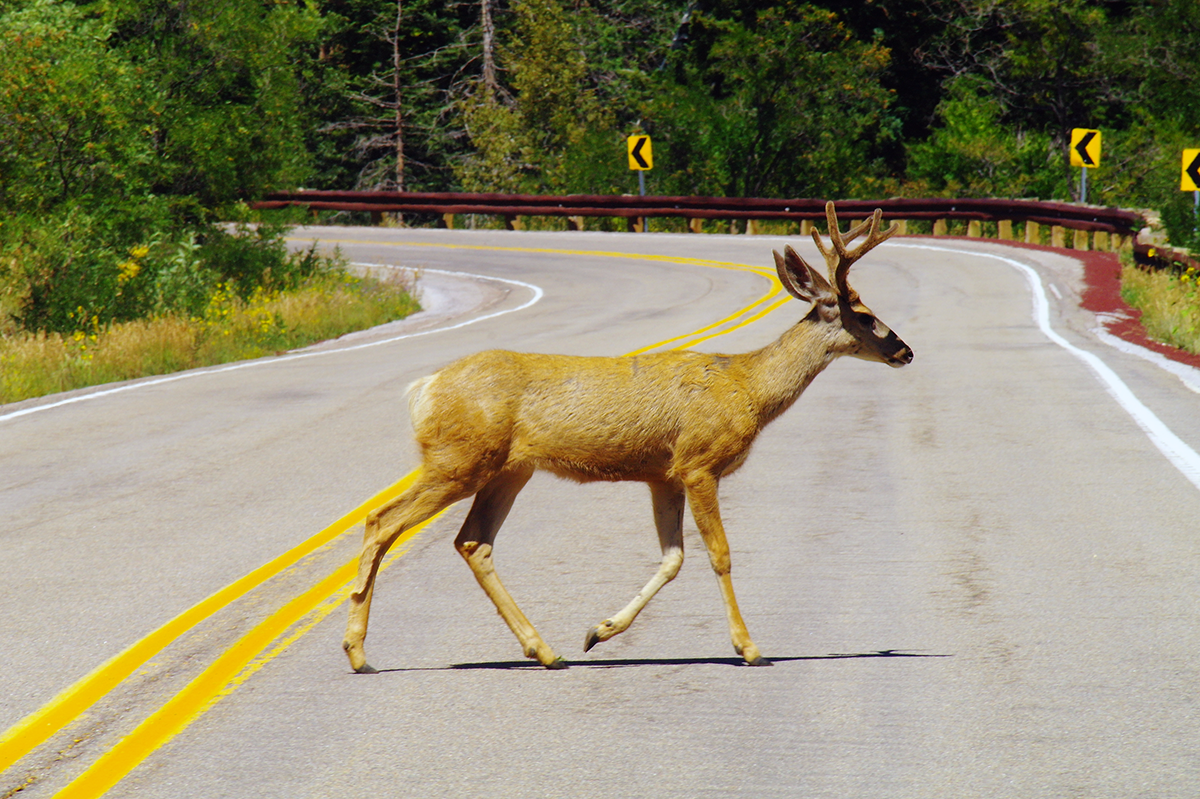How To Avoid Wildlife Accidents This Season

You’re driving at dusk to a family Thanksgiving reunion. A few curves ahead a fawn takes a few tentative steps toward the roadway and freezes.
Does it leap across the road or turn tail into the brush? Do you brake suddenly or veer into a passing lane?
This scenario plays out countless times across our landscape every year. Collisions with wildlife can be traumatic, expensive and dangerous.
In 2016, 189 people were killed in a collision with an animal, according to the Insurance Institute for Highway Safety. This stat has been tracked since 1975, with the deadliest year coming in 2007 (223 deaths).
Collisions with deer are so common, the insurance industry has a classification for the incident. According to State Farm Insurance, more than 1 million crashes were related to deer in 2012.
Fortunately, some safety experts have some simple suggestions that could help you steer clear of any problems.
“It is better to think about and learn how to avoid an encounter with wildlife, than have to react to a dangerous situation when you are unprepared,” according to the British Columbia Conservation Foundation, a group dedicated to preserving fish and wildlife habitats.
Their first suggestion? Slow down. Drivers tend to drive faster when road conditions are favorable.
Other tips for avoiding wildlife come courtesy of Defenders of Wildlife, a nonprofit dedicated to protecting native species throughout North America.
- Be on high alert when driving in wildlife areas. Reduce your speed and be ready to apply the brakes quickly.
- Reduce your driving in wildlife areas at night. Wildlife traffic tends to be greatest at dusk and at dawn, when drivers have limited visibility.
- Travel in a well-maintained automobile. Make sure your windows are clean, the headlights are bright and the brakes perform optimally.
- Know about the wildlife in your area, their migration habits and times of year when they may be more likely to appear on roadways.
- If you see one, expect others. Wildlife often travels in groups.
Interestingly, research has shown collisions with wildlife occur more often than expected on clear nights, on dry road conditions on long, straight stretches of road.
In other words, collisions with wildlife are potentially more common when the weather is pleasant, as drivers tend to move more cautiously in foul weather.
Knowing exactly where a collision is located on a rural highway can be difficult. The British Columbia Conservation Foundation suggests drivers do the following when reporting a collision with wildlife:
- What is the name of the highway or road that you were you traveling on?
- What location were you travelling from, and where were you going?
- What direction were you going (northbound, southbound, eastbound, or westbound)?
- What is the closest town to you?
- What was the last landmark that you passed and how far from that landmark did the collision occur?
Copyright © 2018 Sensible Driver. All rights reserved.